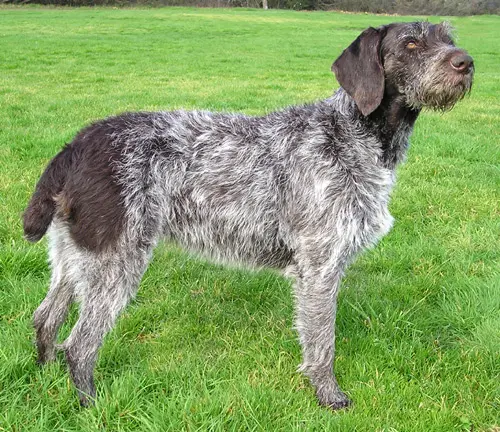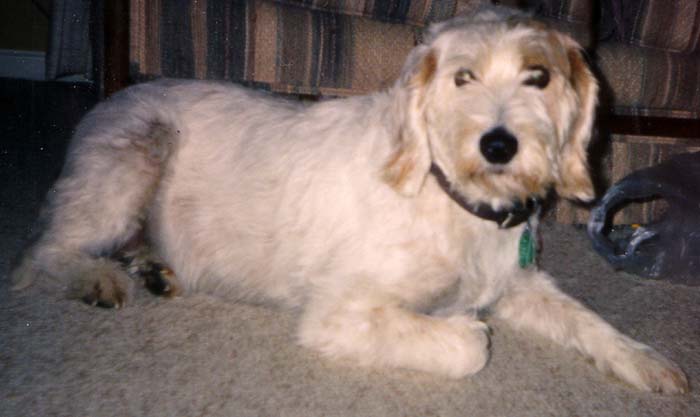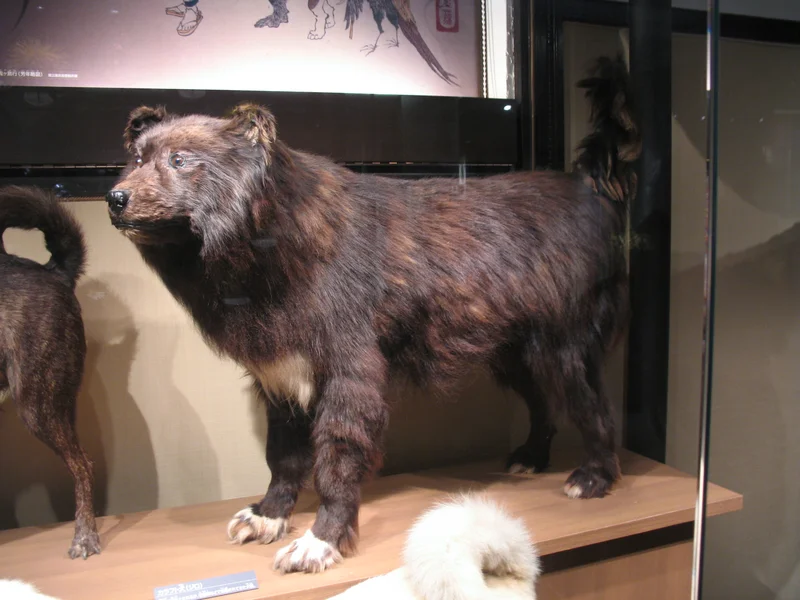Chien Francais Blanc et Orange
The Chien Francais Blanc et Orange is a large, friendly scenthound from France, known for its striking white and orange coat and exceptional hunting abilities. This breed thrives in active environments and requires ample exercise and mental stimulation.
Overview
🐕Breed Overview
✨Key Traits
💡What Makes Chien Francais Blanc et Orange Special
The Chien Francais Blanc et Orange is distinguished by its remarkable scenting ability, which is a key trait that sets it apart from other breeds. This breed is known for its endurance and perseverance during hunts, making it a reliable companion for hunters.
Their friendly demeanor is unusual for pack dogs, as they are typically more manageable and sociable with humans. This breed's vocalizations are another defining characteristic, as they communicate effectively during hunts and can alter their vocalizations based on the situation.
Their adaptability to various environments, combined with their strong pack mentality, makes them unique among hunting breeds.
The Chien Francais Blanc et Orange is a distinguished breed of scenthound that hails from France, known for its striking white and orange coat and exceptional hunting abilities. With a history rooted in the Old Hound of Saintonge, this breed has been meticulously developed for pack hunting, showcasing a remarkable combination of endurance, scenting prowess, and a friendly disposition. Standing between 62 to 70 cm at the withers, the Chien Francais Blanc et Orange possesses a lean and muscular build, long legs, and characteristic long drop ears, making it a quintessential hunting companion.
In the field, this breed is celebrated for its perseverance and ability to work harmoniously in packs, always under the guidance of a human. Unlike many pack dogs, the Chien Francais Blanc et Orange is known for its amiable nature, making it easier for hunters to manage during hunts. Their vocalizations are not only essential for communication during hunting but also reflect their excitement and engagement in activities.
While the Chien Francais Blanc et Orange excels in hunting, it requires a significant amount of daily exercise—at least 90 minutes—to maintain its physical and mental health. Activities such as long walks, fetching games, and scent work are ideal for keeping this breed stimulated. They thrive in environments with ample space, ideally a large yard, and they do best when they are not left alone for extended periods due to their pack mentality.
Training this breed can be a rewarding experience, but it requires consistency and positive reinforcement. Early socialization is crucial to ensure they are well-adjusted and comfortable around other dogs and people. Their high work drive means they need mental challenges to prevent boredom, making activities like agility training or scent tracking particularly beneficial.
In terms of temperament, the Chien Francais Blanc et Orange is friendly and sociable, making it a good fit for families who can provide the necessary exercise and companionship. However, potential owners should be aware that this breed is primarily bred for hunting and may not be suitable as a traditional pet without the right environment and activities to fulfill its needs. Overall, the Chien Francais Blanc et Orange is a remarkable breed that embodies the spirit of French hunting traditions, making it a unique and cherished companion for those who appreciate its heritage and capabilities.
🎉Fun Facts
Despite their hunting background, they are known to be friendly and sociable with people and other dogs.
The breed's vocalizations are not only used for hunting but also reflect their emotions, such as excitement or anxiety.
The Chien Francais Blanc et Orange is known for its distinctive white and orange coat, which is a hallmark of the breed.
These dogs have a strong pack mentality and thrive in environments where they can work alongside other dogs and humans.
They are often praised for their excellent scenting abilities, making them exceptional hunting companions.
Breed Characteristics
Family & Friends
Good Behavior
Get Up & Go
Household Harmony
Temperament & Personality
✨Key Traits
🐕Core Temperament
The temperament of the Chien Francais Blanc et Orange is generally friendly and sociable. They are known for their loyalty and affection towards their families, making them good companions.
Their energetic nature requires regular exercise and mental stimulation, which can be provided through outdoor activities and training. While they are typically good with children and other pets, early socialization is crucial to ensure they are well-adjusted.
Their strong hunting instincts may lead them to chase smaller animals, so supervision is necessary in mixed households. Overall, this breed's temperament is well-suited for active families who can provide the necessary exercise and companionship.
💫Personality Profile
The Chien Francais Blanc et Orange is characterized by its friendly and sociable nature. These dogs are known to be affectionate with their families and enjoy spending time with people.
They are energetic and require regular exercise to keep them happy and healthy. Their strong hunting instincts make them enthusiastic participants in outdoor activities, and they thrive in environments where they can engage in scent work or tracking.
While they are generally good with children and other pets, early socialization is essential to ensure they are well-adjusted and comfortable in various situations. Their intelligence allows them to learn commands and tasks, but they may exhibit stubbornness if not properly motivated during training sessions.
🔊Vocal Tendencies
The Chien Francais Blanc et Orange has a moderate noise level, typical of hunting breeds. They are known for their deep, resonant barks, which are used to communicate during hunts.
While they may bark to alert their owners or express excitement, they are not excessive barkers. Their vocalizations can vary in tone and pitch depending on the context, such as when greeting people or during play.
Owners should be aware that their vocalizations may increase in frequency during hunting activities or when they are excited.
Affection & Social Traits
Energy & Activity
Communication Style
Care Requirements
🏃♂️Exercise Requirements
Daily Exercise
The Chien Francais Blanc et Orange is a highly active breed that requires substantial daily exercise to maintain its physical and mental health. Ideally, this breed should engage in at least 90 minutes of vigorous exercise each day. This can include long walks, runs, or play sessions in a secure area.
Activities such as fetching, agility training, or scent work are particularly beneficial, as they cater to the breed's natural hunting instincts and high energy levels. Puppies may require shorter, more frequent exercise sessions to avoid overexertion, while senior dogs may need gentler activities to accommodate their physical capabilities. Regular exercise not only helps manage weight but also reduces the risk of behavioral issues stemming from boredom or pent-up energy.
Insufficient exercise can lead to destructive behaviors, anxiety, and health problems such as obesity or joint issues.
Preferred Activities
🏠Living & Adaptability
Space Requirements
The Chien Francais Blanc et Orange thrives in environments that provide ample space for exercise and play. Ideally, they should have access to a large, securely fenced yard where they can run and explore.
While they can adapt to living in a home with a smaller yard, it is crucial that they receive sufficient daily exercise outside of the home. Owners in urban settings should ensure they can provide multiple daily walks and opportunities for off-leash play in dog parks.
Due to their pack mentality, they do best in homes where they are not left alone for extended periods, as they can become anxious or bored.
Climate Preference
🍲Feeding Guide
Schedule
Food Types
Portion Size
Special Nutritional Needs
The Chien Francais Blanc et Orange may benefit from a diet rich in protein to support its active lifestyle. It's important to choose high-quality dog food that meets their energy needs, particularly during hunting seasons.
Some dogs may have sensitivities to certain ingredients, so monitoring their reactions to new foods is essential. Supplements such as omega fatty acids can help maintain healthy skin and coat.
✨Grooming Requirements
Grooming Overview
The grooming needs of the Chien Francais Blanc et Orange are relatively low due to its short coat. Regular brushing, approximately once a week, is sufficient to remove loose hair and dirt.
During shedding seasons, more frequent brushing may be necessary to manage shedding. Bathing should be done as needed, typically every few months or when the dog becomes particularly dirty.
Regular checks of the ears and nails are important, as the long drop ears can trap moisture and debris, leading to infections. Keeping the nails trimmed will help maintain their overall health and comfort.
Care Schedule
Brush weekly; bathe as needed (every few months); check ears and trim nails every 2-4 weeks.
Health Profile
⚕️Health Care
Regular health care is vital for the Chien Francais Blanc et Orange to ensure a long and healthy life. Routine veterinary check-ups, vaccinations, and preventive treatments for parasites are essential.
Early detection of health issues through regular examinations can lead to more effective management and treatment. Owners should also monitor their dog's weight and overall health, adjusting diet and exercise as necessary to maintain optimal health throughout their life stages.
Health Issues Overview
⏳Average Lifespan
Genetic Factors
Genetics play a significant role in the lifespan of the Chien Francais Blanc et Orange. Breeding practices that prioritize health and genetic diversity can lead to healthier dogs with fewer hereditary health issues.
Potential owners should seek reputable breeders who conduct health testing and prioritize the overall well-being of their breeding stock. Understanding the genetic background of the breed can help owners anticipate potential health concerns and make informed decisions about their dog's care.
Living Conditions
The lifespan of the Chien Francais Blanc et Orange can be influenced by various environmental factors. Dogs that live in active households with ample space for exercise tend to live longer, healthier lives.
Access to outdoor activities and social interactions with other dogs can enhance their well-being. Conversely, dogs that are kept in confined spaces or without sufficient exercise may experience health issues that can shorten their lifespan.
Regular veterinary care, a balanced diet, and mental stimulation are also crucial for promoting longevity.
🏥Common Health Issues
Hip Dysplasia
Warning Signs
🔬Diagnosis
Veterinarians typically diagnose hip dysplasia through physical examinations and X-rays.
💊Treatment
Treatment options may include weight management, physical therapy, and in severe cases, surgical intervention.
📝Management Tips
Maintain a healthy weight, provide joint supplements, and engage in low-impact exercises to support joint health.
Ear Infections
Warning Signs
🔬Diagnosis
Ear infections are diagnosed through physical examination and ear swabs.
💊Treatment
Treatment typically involves cleaning the ears and administering prescribed medications.
📝Management Tips
Regular ear cleaning and monitoring for signs of infection can help prevent issues.
🛡️Preventive Care
🔬Hip Evaluation
Hip Evaluation assesses the dog's hip joints for dysplasia and other abnormalities, which can affect mobility and quality of life.
📅 Annually after 1 year of age, or as recommended by a veterinarian.
🔬Ear Examination
Ear Examination checks for signs of infection or other issues in the ears, which are common in breeds with long drop ears.
📅 Every 6 months or as needed.
Training
🧠Intelligence & Trainability
💪Work Drive
The Chien Francais Blanc et Orange has a high work drive, stemming from its history as a hunting dog. This breed requires mental and physical stimulation to stay happy and healthy.
Activities that challenge their problem-solving abilities, such as scent tracking or obedience training, are essential for their well-being. Without sufficient mental engagement, they may become bored and exhibit undesirable behaviors.
Providing them with tasks or jobs, such as participating in hunting activities or dog sports, can fulfill their need for purpose and keep them content.
⚠️Training Considerations
Training the Chien Francais Blanc et Orange can present challenges due to its strong hunting instincts and pack mentality. These dogs may exhibit stubbornness or distraction when they are not engaged in hunting-related activities.
To overcome these challenges, it is essential to use positive reinforcement techniques, such as treats and praise, to encourage desired behaviors. Consistent training sessions that incorporate mental stimulation, such as scent games or obedience drills, can help keep the dog focused and responsive.
Socialization from an early age is crucial to ensure that they are comfortable around other dogs and people, which can mitigate potential behavioral issues related to their pack nature.
📝Training Tips
Effective training for the Chien Francais Blanc et Orange requires patience and consistency. Start with basic obedience commands, using positive reinforcement to reward good behavior.
Incorporate activities that align with their natural instincts, such as scent tracking or agility exercises, to keep them engaged. Regular socialization with other dogs and exposure to various environments will help them adapt and reduce anxiety.
It's important to establish a routine and set clear boundaries, as this breed thrives on structure. Training should be a fun and rewarding experience for both the dog and the owner, fostering a strong bond and mutual respect.
History & Heritage
📜Origin Story
The Chien Francais Blanc et Orange originated in France, where it was developed for the specific purpose of hunting in packs. Its lineage can be traced back to the Old Hound of Saintonge, which was known for its size and hunting prowess.
As hunting practices evolved, so did the breed, leading to the establishment of the Chien Francais Blanc et Orange as a distinct breed. The breed's name reflects its striking coat color, which is a combination of white and orange.
The breed has been utilized by hunters for centuries, and its friendly demeanor and strong work ethic have made it a favorite among hunting enthusiasts. Today, the Chien Francais Blanc et Orange continues to be valued for its hunting abilities and its unique characteristics that set it apart from other breeds.
⏳Development History
The Chien Francais Blanc et Orange descends from the Old Hound of Saintonge, a large hunting dog that was prevalent in France. Over time, this breed was refined to enhance its hunting capabilities, particularly its scenting ability and stamina.
The breed was officially recognized in the 20th century, and its development has been closely tied to the traditions of hunting in France. Breeders have focused on maintaining the breed's physical characteristics, such as its lean, muscular build and distinctive coat color, while also ensuring that its temperament remains friendly and manageable for hunters.
The breed's standards emphasize the importance of physical and behavioral traits that contribute to its effectiveness as a hunting companion.
🛡️Purpose & Historical Role
The primary purpose of the Chien Francais Blanc et Orange is to serve as a pack hunting dog, specifically designed for tracking and hunting game. This breed excels in working alongside humans in a structured hunting environment, where it uses its keen sense of smell and vocalizations to assist in locating and retrieving game.
Historically, these dogs have been used to hunt larger game, such as deer and boar, showcasing their strength and endurance. Their ability to work in packs allows them to be effective in hunting scenarios, where teamwork and communication are essential.
🏺Cultural Significance
The Chien Francais Blanc et Orange holds a significant place in French hunting culture, particularly in the tradition of pack hunting. This breed is celebrated for its exceptional scenting ability and its friendly disposition, which makes it easier for hunters to manage in the field.
Historically, these dogs have been used to hunt a variety of game, showcasing their versatility and importance in rural communities. Their presence in literature and art reflects their esteemed status among hunting breeds in France, and they continue to be a symbol of the rich heritage of French hunting practices.
Conservation Status
This breed is less common but has stable populations in certain regions.









